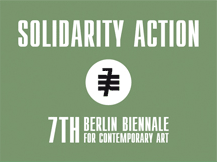In Rome, and in Italy, what is weak – or non-existent, even – is an evolved cultural policy for contemporary art.
A plan of long-term action that sets goals and priorities, coordinates and supports actions, knows how to promote the local scene and guarantees quality, autonomy and duration of projects, complying with principles of transparency in the allotment of funding and good practices in the management of public institutions (like the introduction of transparent criteria of evaluation, connected to merit and competence, in the choice of the directors and curators of those institutions, with incentives for systemic strategies and the application of more flexible models of independent management to compensate for a public bureaucracy that has inflated management costs and produces inevitable inefficiencies in productive processes).
A policy that should be outlined by the administration in a relationship of close contact, listening and collaboration with sector professionals, away from the logic of political patronage or, even worse, total uncertainty, respecting forms of professional expertise and the need for dialogue, participation and shared choices. To this end, growth of knowledge and responsibility with respect to culture and art is indispensable, seen as a common asset not just in public institutions and administrations, but also among citizens and sector players, to generate forms of intervention, manifestations of interest, actions of safeguarding. Stimulating more direct participation, a determination to get away from the particular, to attempt to do something that goes beyond one’s own immediate interests.
We need to recover faith in the possibility of changing the state of things, of having an active role in the processes that lead to choices and decisions regarding contemporary art in the public sphere. In this sense, it is very encouraging that in Rome the permanent Commission for contemporary art (Consulta permanente per l’arte contemporanea) has been formed. Created during the assembly of the movement of citizens and art workers organized spontaneously to defend the financial and program independence of the Macro, the civic museum of contemporary art, it expresses the conviction of the need for a form of coalition of the various stakeholders and forms of expertise of the Roman art world, to give rise to a single voice capable of establishing relations with politicians and administrators in an effective way.
Composed of six delegates elected by the assembly to represent the various areas of intervention, the Commission intends to contribute to the function of orienting public policy regarding contemporary art, and to play a role of monitoring of effective implementation, expressing views, promoting public debate on pertinent themes and formulating proposals.
The efficacy and effective impact of the Commission on political-administrative dynamics remains to be seen, and much will depend on its capacity to be recognized as an authoritative counterpart, lucidly representing the needs and energies of a sector so seriously underestimated by Italian politics. In the meantime, it should go on record that the Roman art world has finally found a place and an opportunity for encounter and debate, outlining an original model of participation in the determination of cultural policies.
CRISTIANA PERRELLA
Art critic and curator. Member of the Permanent Commission for Contemporary Art, Rome.


